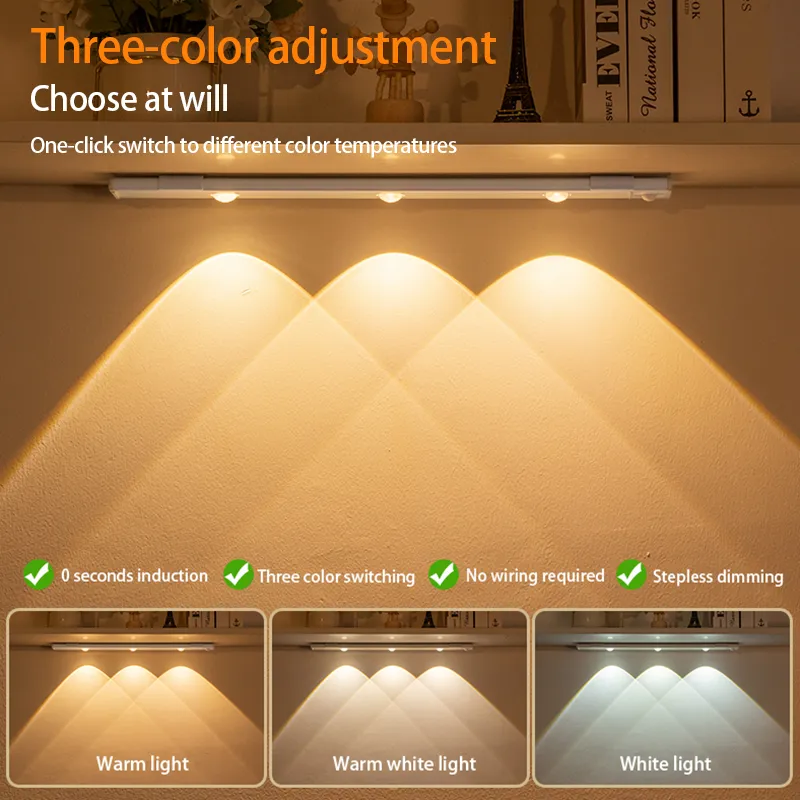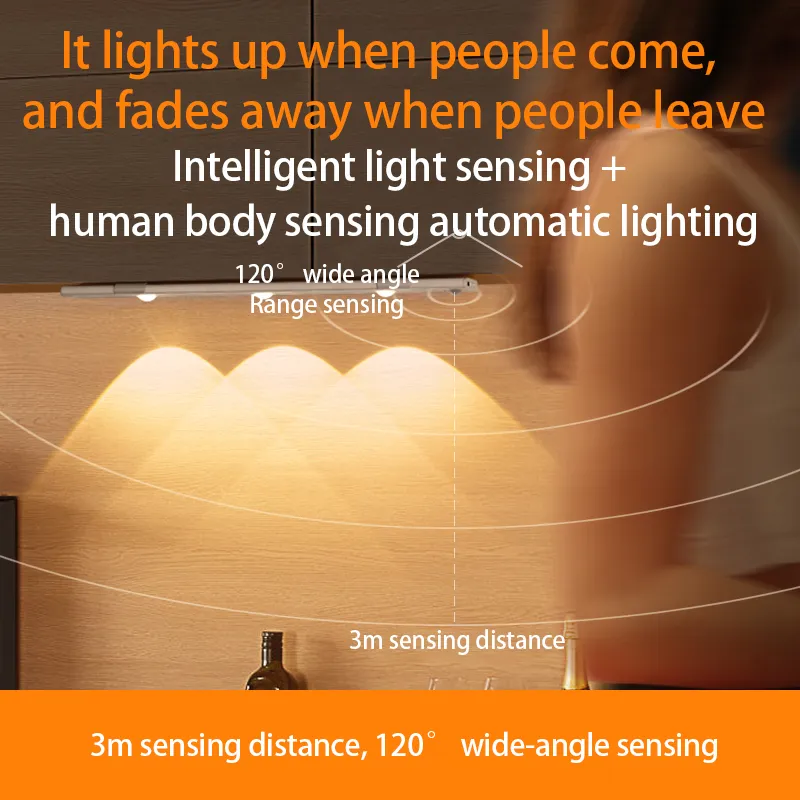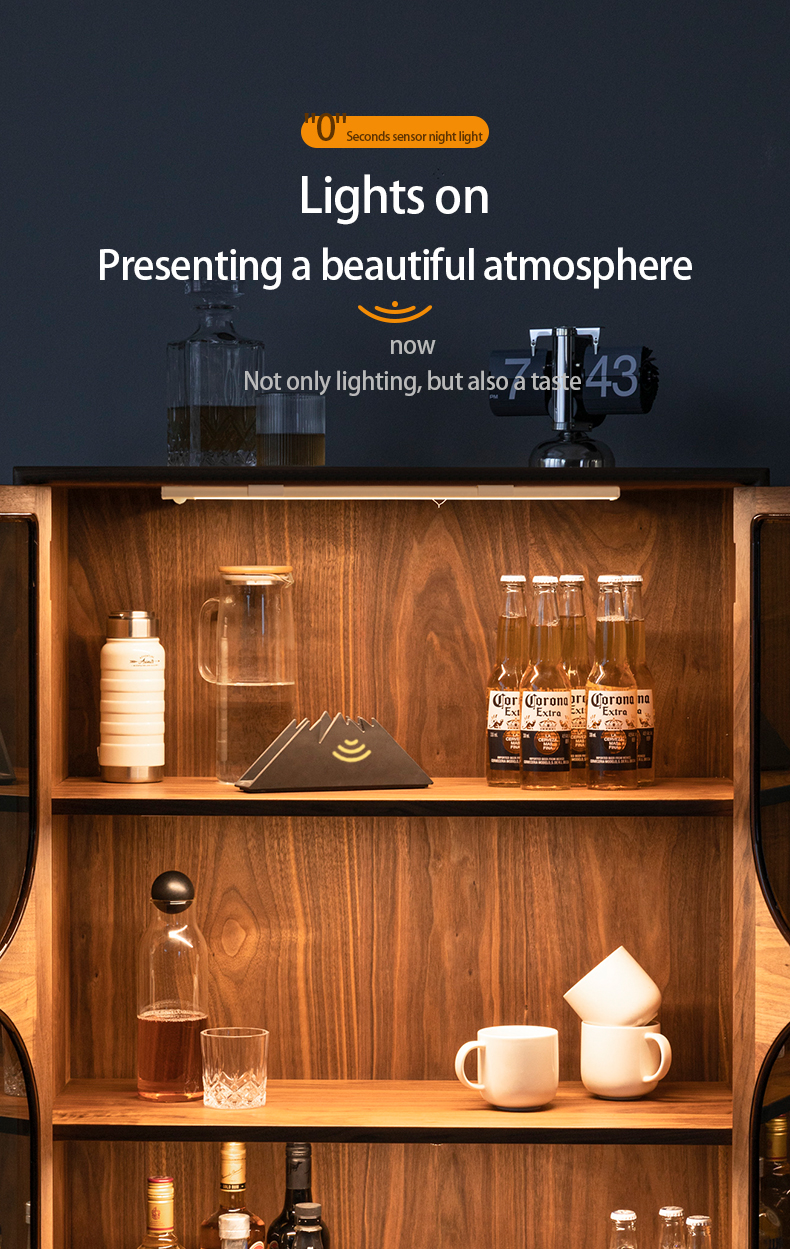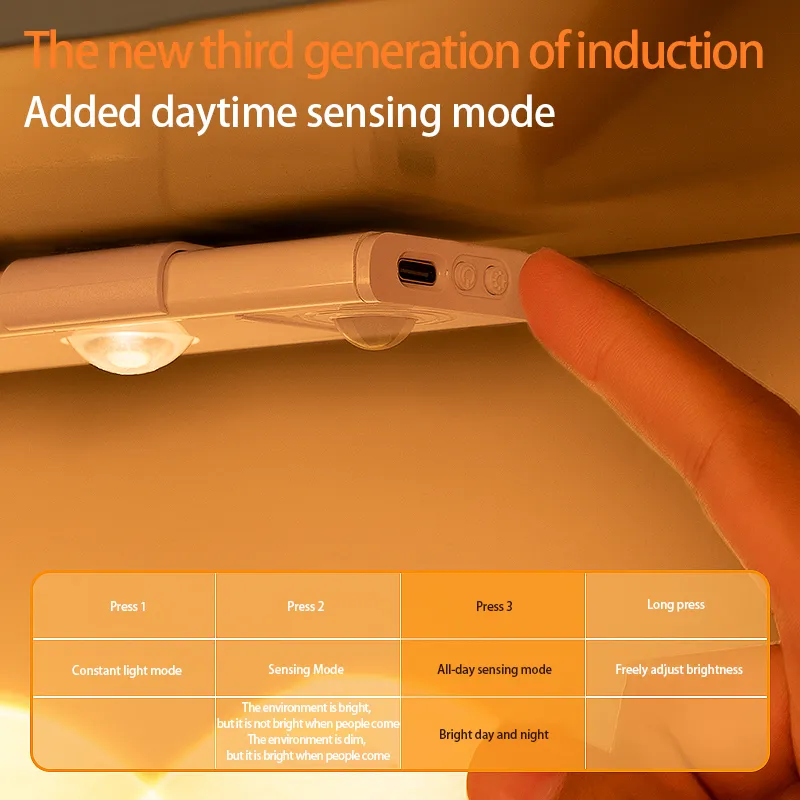Is an under-cabinet night light 12V or 24V?
Under-cabinet night lights not only provide convenient task lighting but also enhance the aesthetics and safety of the kitchen. However, choosing the right type of under-cabinet night light remains a challenge for many consumers, particularly when choosing between 12V and 24V.
In this article, we will analyze in detail the operating voltage of under-cabinet night lights, explaining the differences between 12V and 24V to help consumers make the right choice based on their specific needs.
We will conduct a comprehensive and in-depth discussion of voltage standards, lamp wattage, installation requirements, safety, and energy-saving benefits to help consumers understand which voltage is best for their home, ensuring a more rational and professional approach to selecting and installing an under-cabinet night light.

What is an under-cabinet night light?
An under-cabinet night light is a device used to provide localized illumination. It is typically installed under cabinets, above countertops, or in other hidden locations. Its purpose is to provide an appropriate amount of light at night or in low-light environments, making it easier for users to operate without a main light. The primary function of under-cabinet night lights isn't just to illuminate work areas; they can also create a more welcoming atmosphere, particularly in spaces like kitchens and bathrooms, serving as both a guide and a decorative element.
These lamps can be powered by direct current (DC). Common voltages include 12V and 24V. Choosing different voltages directly affects factors such as the lamp's power, brightness, installation requirements, and safety.

What do 12V and 24V mean?
12V and 24V are both common operating voltage standards for electrical devices. They represent the voltage levels required for proper operation, typically determined by design and usage requirements.
• 12V: This refers to a device operating at 12 volts. This is a lower voltage standard, typically suitable for devices with lower power consumption and minimal energy consumption.
• 24V: This refers to a device operating at 24 volts. This is a medium voltage standard, suitable for devices with higher power requirements.
Common Voltage Options for Under-Cabinet Night Lights:
When choosing an under-cabinet night light, the most common voltage standards are 12V and 24V. Both voltages offer performance advantages. Choosing one depends on several factors, including lighting requirements, installation environment, lamp wattage, and user safety and energy efficiency requirements.
What are the differences between 12V and 24V under-cabinet night lights?
1. The Impact of Voltage Difference on Lamp Brightness
Voltage is a key factor affecting lamp brightness. 24V systems generally support higher-wattage lamps, so for the same wattage, 24V lamps offer greater brightness than 12V lamps. Specifically, 24V lamps typically provide more light output for the same current, making them more suitable for areas requiring higher brightness.
Although 12V under-cabinet night lights have lower wattage, their brightness is still sufficient to meet basic lighting needs in general kitchens and bathrooms. However, 24V lamps may offer advantages for illuminating larger areas, particularly those requiring higher brightness or a wider illumination range.
2. The Impact of Voltage Differences on Current
Voltage directly affects the current drawn by a device. A 24V system typically provides lower current for the same power, resulting in less energy loss during long-distance transmission. This is crucial for lighting installations, particularly in environments requiring long wiring. Using a 24V system can reduce current loss and improve transmission efficiency.
In contrast, a 12V system draws a relatively high current, potentially causing voltage drop and current loss over long transmission distances. Therefore, if your under-cabinet night light is located far from a power source, a 24V system may be more appropriate.
3. The Impact of Voltage on Safety
Safety is a key concern for users of electrical equipment. Generally speaking, a 12V system is safer because the lower voltage is easier to control during operation, making it particularly suitable for home use, especially with children and the elderly. While 24V systems offer a relatively high voltage, modern electrical equipment generally incorporates comprehensive safety designs and safeguards, making them comparable to 12V systems. In particular, they don't generate excessive current or heat during operation, making 24V under-cabinet night lights safe to use.
4. Impact of Voltage Differences on Energy Efficiency
In terms of energy efficiency, 24V systems offer significant advantages. Due to the lower current transmission, 24V lamps typically provide higher brightness output for the same wattage, with less current loss, resulting in higher energy efficiency.
Although 12V systems have a relatively low energy efficiency, they are sufficient for daily household lighting needs and consume less energy. If you have high energy efficiency requirements and your lighting needs are more basic, 12V lamps may be more economical.

How to Choose the Right Voltage for Under-Cabinet Night Lights?
1. Determine Your Lighting Needs
When choosing between 12V and 24V under-cabinet night lights, you first need to clearly define your lighting needs. Here are a few factors to consider:
• Brightness requirements: If you need stronger lighting or have a large, darker under-cabinet space, a 24V system may be more suitable, as it provides greater brightness and is ideal for larger spaces like kitchens or dining rooms.
• Energy efficiency requirements: For homes with high energy efficiency requirements, 24V lamps can be a good choice. Although 12V lamps draw less power, if the overall space is large or the lights are used for extended periods, choosing a 24V system can significantly reduce energy consumption.
• Installation distance: If your under-cabinet night light is located far from a power source, choosing a 24V system can reduce current loss and ensure effective lighting.
2. Safety and ease of installation
12V systems are simpler and safer to install, making them suitable for home use, especially with children and the elderly. Because low-voltage systems draw less current, installation risks are lower.
Due to their higher voltage, 24V systems may require more protective measures, especially in kitchens or bathrooms with high humidity. Proper waterproofing is crucial.
3. Lighting Power and Control Method
If your under-cabinet nightlight draws more power or you plan to connect multiple fixtures in series, a 24V system generally offers better control. Lower current means less energy loss between fixtures, resulting in a more precise control system.
For smaller, lower-power under-cabinet nightlights, 12V fixtures are sufficient for everyday lighting needs and are easier to install.
4. Budget and Cost
While 24V fixtures offer greater brightness and efficiency, they generally cost more than 12V fixtures. For those on a budget, choosing a 12V under-cabinet nightlight is a cost-effective option. For those seeking more efficient and brighter lighting, a 24V system is a more suitable investment.

How does Huari control production costs?
As a large-scale Chinese manufacturer, Huari Lighting manages costs by integrating raw material purchasing, automated production, and efficient logistics. This allows us to offer cheap LED lights without lowering quality. Buyers purchasing wholesale enjoy affordable prices on popular items like cabinet lamps, downlights, and track lights.
Our ability to supply more than one million units monthly ensures economies of scale. With direct factory quotes and discount promotions, Huari helps customers maximize profits while maintaining high quality standards.
